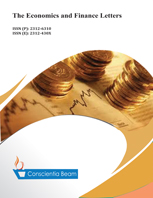Spillover Effect of American Monetary Policy on China After the Subprime Mortgage Crisis - Based on the Mundell-Fleming-Dornbusch Model
DOI:
https://doi.org/10.18488/29.v9i1.2905Abstract
This paper uses the Mundell-Fleming-Dornbusch model to theoretically analyze the spillover effects of the American monetary policy on China after the subprime mortgage crisis. The research finds that the traditional American monetary policy has little impact on its economic revival. The implementation of a quantitative easing policy affected China’s macroeconomic development, capital flow, and import and export trade through the channels of interest rate, exchange rate, and trade flow. In the empirical part, this paper constructs a vector autoregressive model using data between the second quarter of 2007 and the fourth quarter of 2019. Based on the stability test, the Granger causality test preliminarily carries out the solution that exchange rate, interest rate, and trade mechanism all prominently show the spillover effect of US monetary policy on China. So do the macroeconomic variables. Through impulse response, it is found that the spillover of US monetary policy will cause overheating and strong liquidity in China's economy. In the future, China needs to adopt a prudent monetary policy, actively adjust its industrial structure, strengthen international cooperation, and continuously increase its international competitiveness to resist external shocks.

